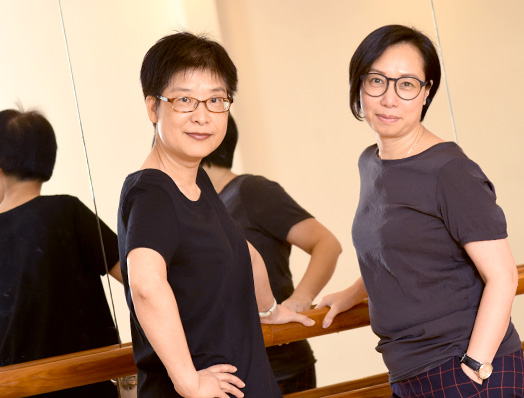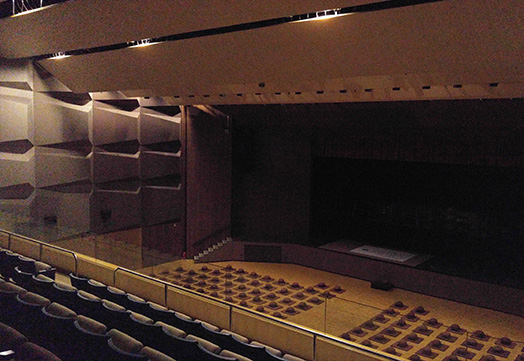
Sir Run Run Shaw Hall: A Theatrical Way to Save Energy and Money
Many of us keep a close eye on how much we are paying for our household electricity bills, but have no qualms about leaving the lights on in empty offices or setting the classroom to a freezing temperature. According to government statistics, the places where we work, learn and play account for 70% of the city’s total energy use. Non-domestic energy efficiency is crucial for us to avoid paying a high price for depleting planet Earth.
Earning for Energy Efficiency
To raise awareness of energy use on campus and encourage behavioural change, CUHK rolled out the Energy Conservation Incentive Scheme in 2014 targeting 20 buildings. Together they represent 55% of the University’s total electricity consumption and involve over 100 departments and offices.
According to the Scheme, if a user unit succeeds in lowering energy use by over 4% (the target) against a baseline, 80% of the additional amount saved beyond the target will be refunded to the building users concerned. The remaining 20% saving will be shared among the key operating units of the Scheme including the Campus Planning and Sustainability Office, the Estate Management Office, the Campus Development Office and the Bursary. It aims at making us all better, wiser energy users, with lower bills to prove it.
And it worked. Among the 20 participating buildings, 13 have achieved the 4% reduction target. From January 2014 to December 2015, the Scheme saved around 3.2 million kilowatt hours of electricity, which is enough energy to power all the street lighting in Hong Kong for half a month. In terms of coal, we would need to burn 1,700 tons of black diamond to generate that amount of electricity savings.
The Big Winner
Among the dozen of buildings that went beyond the 4% reduction goal, one particularly stands out with a glaring 24%, six times as much as the quota and 12% ahead of the runner-up. The undisputed champion is the Sir Run Run Shaw Hall (SRRSH).
When EMO conducted a walk-through inspection of the Hall in August 2014, the energy manager, who was supposed to identify energy-saving possibilities on the premises, found that the eco-aware unit had already gone to great lengths to ensure energy efficiency of the biggest theatre of CUHK.


Arts administrator and manager of SRRSH Ribble Chung revealed that her office had set about changing the stage lights of the theatre from incandescent to LED as early as 2011. ‘The 1,000-watt incandescent bulbs were superseded by the 750-watt LED lamps. With as many as 50 lights over the stage, the amount of energy saved is considerable,’ said Ribble. In addition, the wattage of luminaires above the auditorium has gone from 400 to 200. When the theatre is unused, only a dim row of emergency lights remains lit to allow for safe passage out of the building.
Fanny Li, management assistant of the Office of the Arts Administrator, was appointed energy warden of SRRSH last year. She pointed out another contributor to the building’s remarkable energy performance: lighting for the corridors, washrooms, and backstage dressing room was upgraded with motion-sensing switches. ‘Actors and actresses are likely to forget to turn off the lights when they hurry to the stage. Occupancy sensors are a convenient way to reduce such energy wastage,’ explained Fanny.
Every month, the theatre submits a schedule of programmes to EMO so that the technicians can regulate the hall’s air-conditioning based on the anticipated time and attendance. For example, a full-house event requires a lower temperature, while for a small-scale activity, an increase in wind volume may suffice to cool the air.
A Green Paradigm
The Office of Arts Administrator, nestling in the west wing of SRRSH, sets an example of creating green culture in the workplace. Fanny said, ‘The separate air-conditioning units in our office only take turns to work. A fan near the front door helps to spread the air and make sure every corner is evenly cooled. It decreases power consumption as well as extending the useful life of the assets.’
Interestingly, the greenness of this office was reinforced by an in-house monetary penalty: Every time the housekeeper spotted any computer screen that's still on after office hours, the indiscreet energy user had to put a dollar in the jar, which had once collected enough coins to throw an afternoon tea party. ‘However, the game is over now because each of us has become accustomed to being green. Even new colleagues will appreciate and follow the green practices voluntarily,’ Ribble said proudly.

The Sequel: Balancing with Disincentives and Engaging New Users
The pioneers of the Energy Conservation Incentive Scheme have just entered the second phase of the Scheme this year. In this phase, the reduction target will be raised to 8% of the baseline, and a disincentive—in the form of a cost-sharing equal to 50% of the excess costs (albeit capped at 4% of the baseline)—will be applied in cases where the user spends beyond the reduction target.
The Scheme has plans to include more non-residential buildings starting from 2017. The newcomers will be subject to the same arrangements as their predecessors were when they first joined, with disincentives to be introduced at a later phase.
Prof. Fung Tung, Associate Vice-President and chairman of the Committee on Campus Sustainability, spoke highly of the Scheme: ‘The success of the Energy Conservation Incentive Scheme would not have been possible without the collective efforts of all user departments concerned to reduce electricity consumption in the past two years. As the impact of global warming and climate change is a real and impending threat to the wellbeing of mankind and all species on this planet, I look forward to staff and students’ continuous support to further reduce energy use and bring about widespread behavioural changes on campus.’


